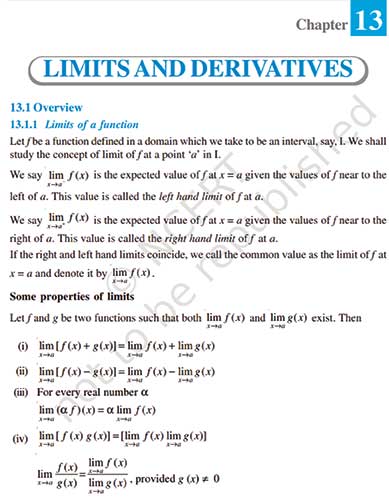Anuradha C
When Shah Rukh Khan comes strutting on prime time TV endorsing an e-learning gadget for school children, you can be sure that the idea has arrived! He can be seen playing the typical harried Indian dad – sometimes a ‘Madrasi’, sometimes a ‘Gujju’ – trying to figure out why his kid is so fond of learning from a digital device. The advertisement is symbolic of many facts surrounding the much dreaded but loved e-learning phenomenon.
What we love about e-learning
Learning from computers, PCs to be more precise, is not new at all. Since the advent of the Internet in the late 1990s, educational content available online has been steadily increasing. In the initial years, the content was mostly textual. Companies, universities and governments set up websites and uploaded publicly accessible content. Of course, specialized information was available only on paid terms.
As computers got smaller and wireless network connectivity reached the hinterlands, learning became more decentralized. If you have a way of explaining things, you wouldn’t have to be a professor with pedigree to put forth your thoughts. Just get on the Internet, upload your video and you would be the newest addition to the e-learning world! Enough people like the way you teach, and you could be the next Internet Guru!
When mobile phones morphed from being mere communication devices to computing and entertainment devices, they took on an all powerful avatar. The learning gap between a city student from a private school and a rural student from a government school diminished. Simply because both had access to the same infinite educational content on their mobile devices.
Another critical dimension of learning online is that learning is not just textual any more. Learning in the real world is never merely textual either. We learn from nature through sights, sounds, smells, movements, colours, and so on. Similarly, learning from audio and video content online makes our learning process a lot more integrated and comprehensive.
This aspect is best appreciated through an example. Let’s say you want to learn some painful math concept. Trust me there are plenty of them; ask any student and they will vouch for this, even the geeky ones! And many teachers also admit that painful concepts are indeed difficult to explain in words. Let’s pick something as an example from the painful lot – “Limits” from Differential Calculus. It’s one of the deadly banes in the life of a class 11 student!

Image source: https://www.khanacademy.org/math/differential-calculus/dc-limits/dc-limits-intro/v/introduction-to-limits-hd?modal=1
The mere sight of these lengthy formulae listed one after the other in a fat, dog-eared textbook gives one the jitters. A fatal flaw with our math and science textbooks is that they don’t build a context before starting with mathematical explanations. They just shoot off with the fundas, in dry clinical tones. They don’t spare a thought for the hapless kid sitting with the book in hand, wondering about the relevance of the topic in the first place.

Whereas, contrast it with good educational content available online. They always begin with a real life problem which the mathematical concept endeavours to solve. Then they make use of voiceovers, pictures, graphs, animations, examples to illustrate the concept in simple terms. In short, they attempt to make learning natural and exciting. Which is exactly the goal of education – to inculcate the joy of learning in a student.
Learning efficacy in India is also greatly hampered by poor English Language comprehension skills among children, especially in rural India. But this deficit is fast being filled up. Thanks to online tutorials in various Indian vernaculars. Some of the Youtube videos on math fundas in Tamil or Hindi language are truly a delight to watch. The way things are heading, thanks to Artificial Intelligence and Natural Language Processing, your Google voice assistant will just as easily understand a Telugu or Tamil query, as it understands English.
When this happens, the sheer beauty and rich heritage of the Indian knowledge space will emerge online – be it regional history, vernacular literature or native medicine. Students will appreciate the glorious heritage they have inherited and learn to nurture it. At this stage, our school syllabus will need a complete overhaul. But that’s a thought for another day.
What we dread about e-learning
Having waxed eloquent about the great benefits of online learning, I would be doing great injustice if I don’t equally highlight the harm and damage it might cause.
The most obvious one is the adverse impact of holding an electronic device so close to the human body for long hours. Human eyes are not designed to view such high intensity light at such close quarters. Ear plugs cause damage to the ear tissues upon prolonged use. High volume audios cause impairment to our hearing ability. Constant use of the thumb and fingers on the screen, holding a heavy gadget in the palm for long hours cause inflammations in the tissues and muscles in our hands. Placing laptops on our torso for long hours, unnatural seating postures – the list of direct physical damages that gadgets might cause in the long run are alarming. Unfortunately, there is not much awareness or credible proven information on these effects.
The other damage caused by these gadgets is subtle but more potent. The same gadget that serves as an educational aid also doubles up as an entertainment center. In fact, a mobile phone has replaced several social roles in a child’s life. It doubles up as a fun partner, a guide, a companion, a teacher and a confidante. To the extent that children nowadays prefer to spend their time in the company of the phone rather than socialize with mere mortals – be it family or friends. As a consequence, they lose the ability to interact, share and socialize. No amount of education can compensate for these lacunae in learning. Lack of these abilities, hamper the very personality of a child. Now that’s a costly loss.
So is e-learning good or bad?
Elements of nature such as fire or water are not good or bad per se. While a moderate fire warms homes and cooks food, a raging fire kills and destroys. Similarly, no technological advancement can be labelled as good or bad. It depends on the purpose and extent of application.
When e-learning is used to augment traditional learning methods to add clarity and bring in the fun element, it is a great addition. But when learning is restricted to gadgets, this unnatural and excessive reliance only harms.
Whether we like it or not, e-learning methods are here to stay and grow. Let’s exercise our discretion and make judicial use of these methods. If only Shah Rukh Khan also made this point on TV instead of merely admiring his child’s proficiency with the gadget!
The author is an IT industry drop-out after several years of slogging and money-making. She is now working freelance as a corporate technical trainer and content writer. She is hoping to channelize her passion for writing into a satisfying experience for herself and a joyous experience for her readers. She can be reached at anuradhac@gmail.com.
